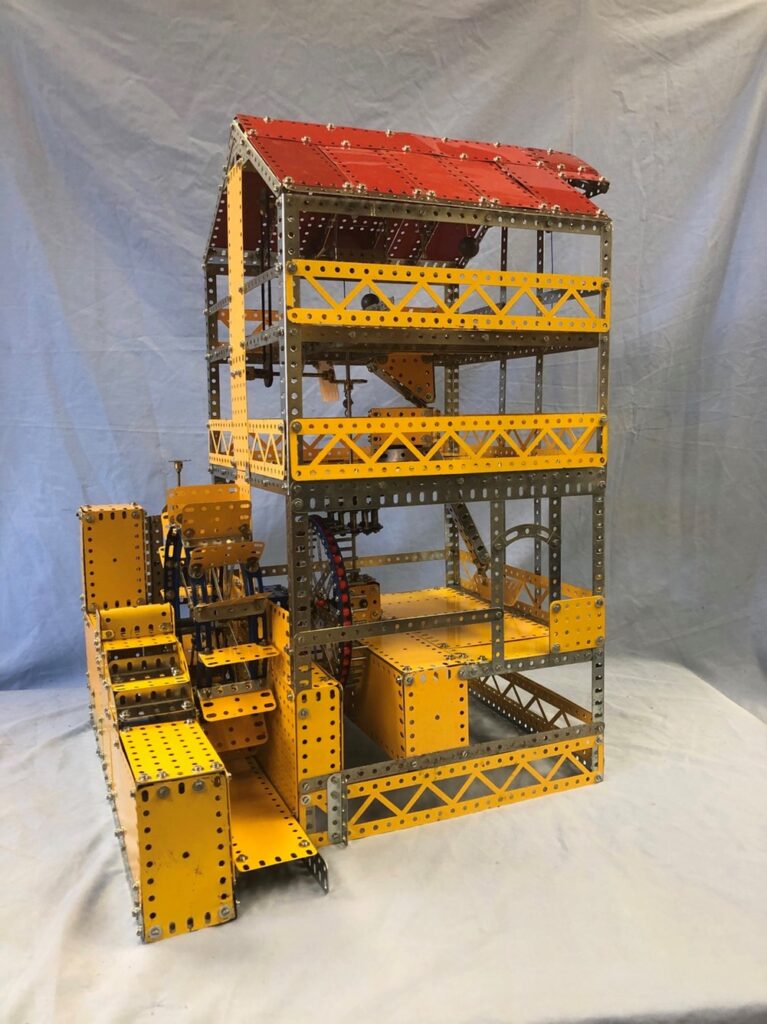Water Driven Mill
18th Century
Milling grain has been an essential service to mankind for centuries. Prior to the advent of steam power rivers were the source of energy for grinding all sorts of grain into meal for human and stock consumption.
My model in Meccano shows typical features of water-driven mill of the 18th Century.
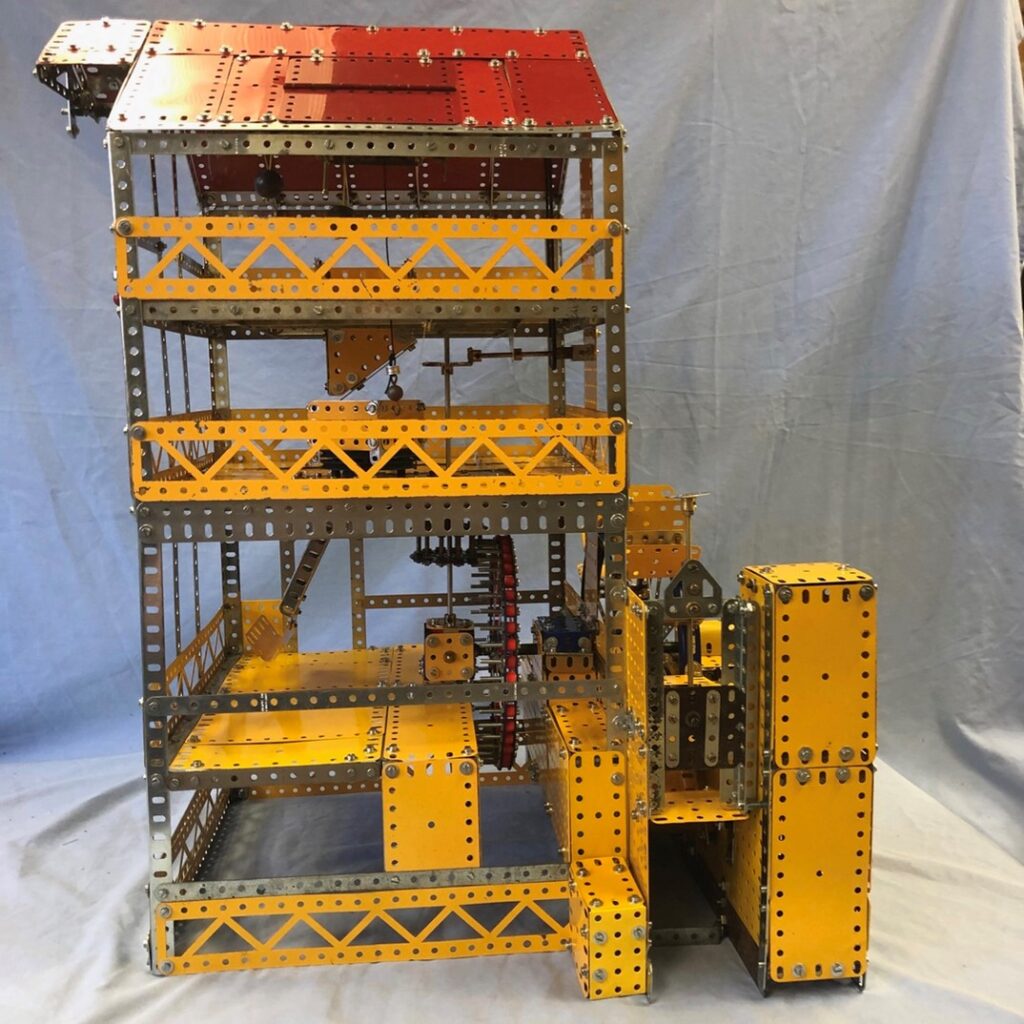
The mill is built next to stream that has been channelled between a pair of substantial parallel masonry walls. One wall forms a water barrier on which the millhouse sits and the other is situated in the river stream. A water-race is formed between the two. It is shaped to suit the water- wheel the massive axle of which sits in water lubricated wooden bearings.
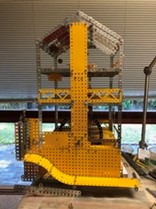
The waterwheel is the singular driving force in the millhouse. The energy transmitted from the river flow is governed by a sluice gate upstream of the axle.
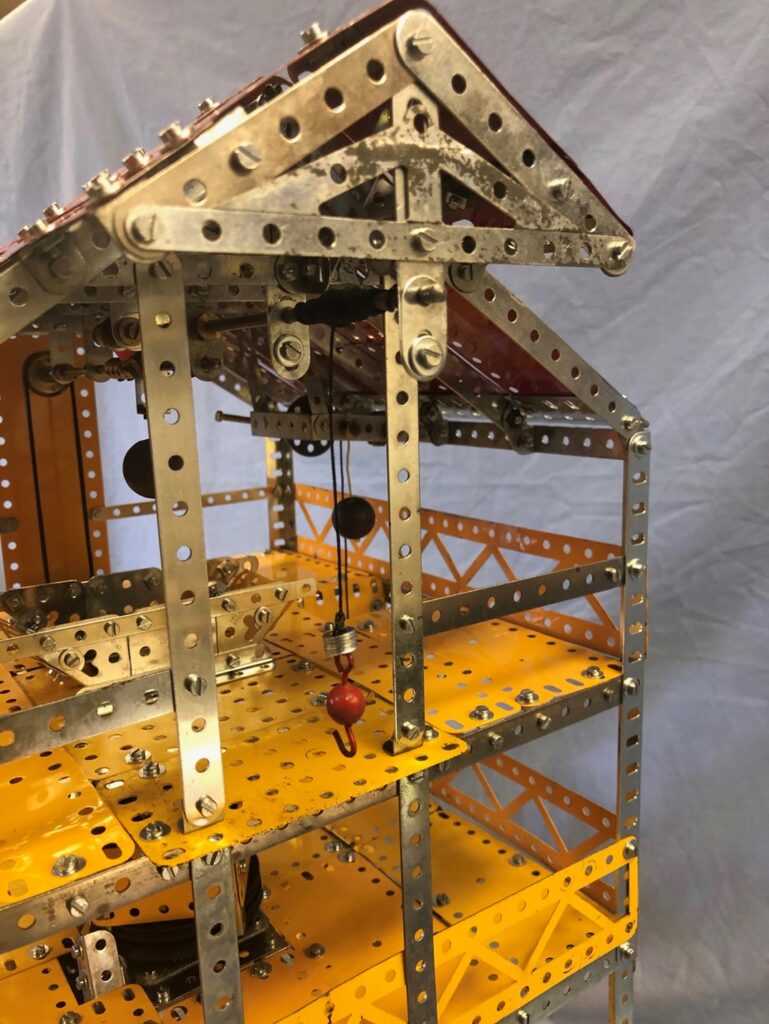
Grain is brought to the mill in sacks and brought to the top floor via an internal or external hoist for temporary storage and drying.
Production begins with grain poured into a grain bin on the top floor.
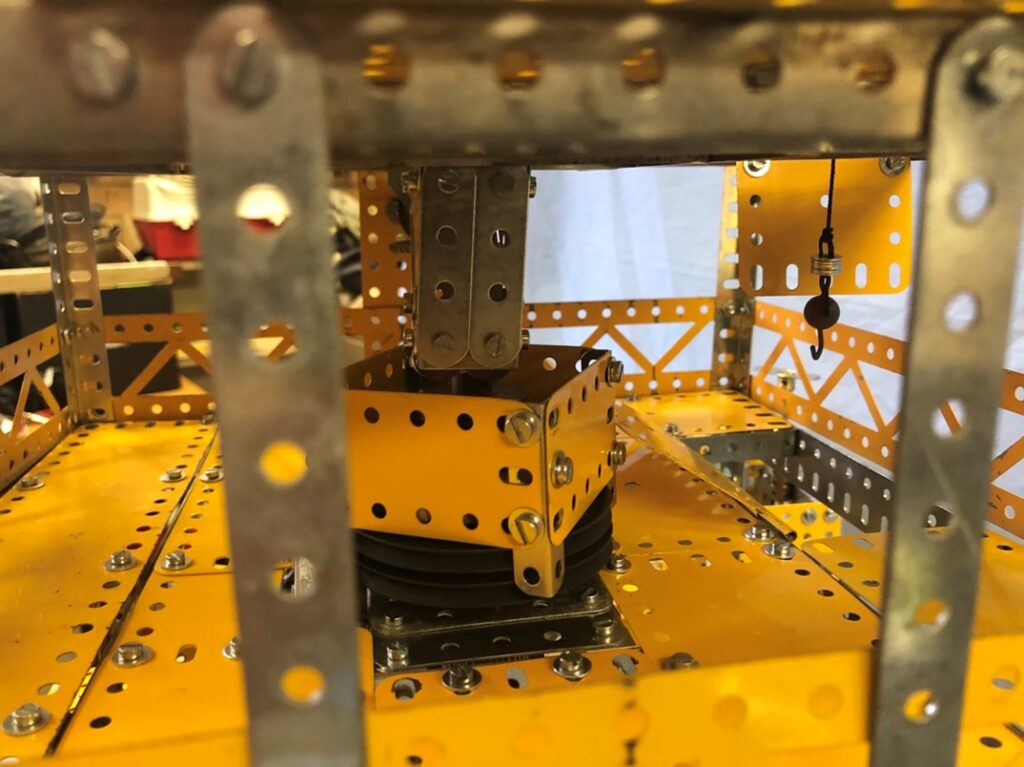
It gravitates via chutes to be fed between grinding (running) stones on the intermediate floor where it is turned into meal.
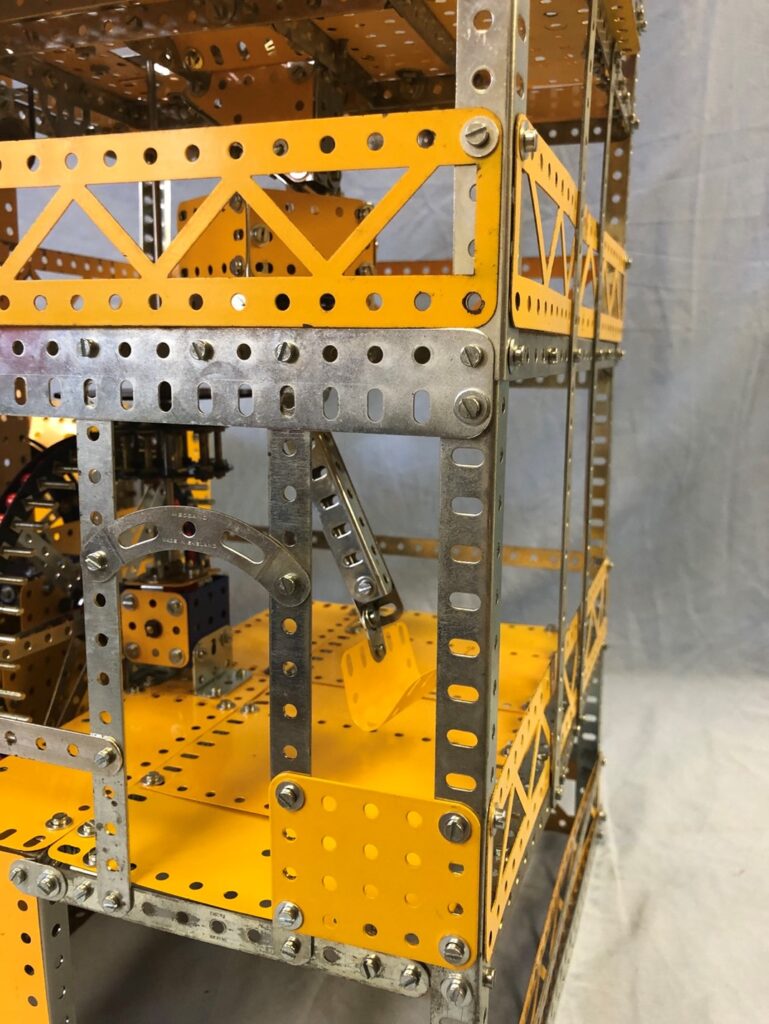
A lower chute conducts the meal to a trough where sacks can be filled on the ground floor. From here it can be taken from the mill in carts backed up against the millhouse door.

Once it was not uncommon to find only a few small components of a grinding mill made of metal.
Grinding was done between stones that could be lifted out of the mill and replaced afresh. All other moving parts were once made from timber. Wearing parts such as cogs and spigots were ingeniously made to be pulled out and replaced.
The working parts of the mill all have traditional names. The largest wheel is known as the Pit Wheel. It drives the Wallower that turns the Great Spur on the main vertical shaft. The Great Spur can be used to drive more than one set of Mill Stones via Stone Nut shafts.
A secondary vertical shaft for powering the hoist is driven by a Crown Wheel.
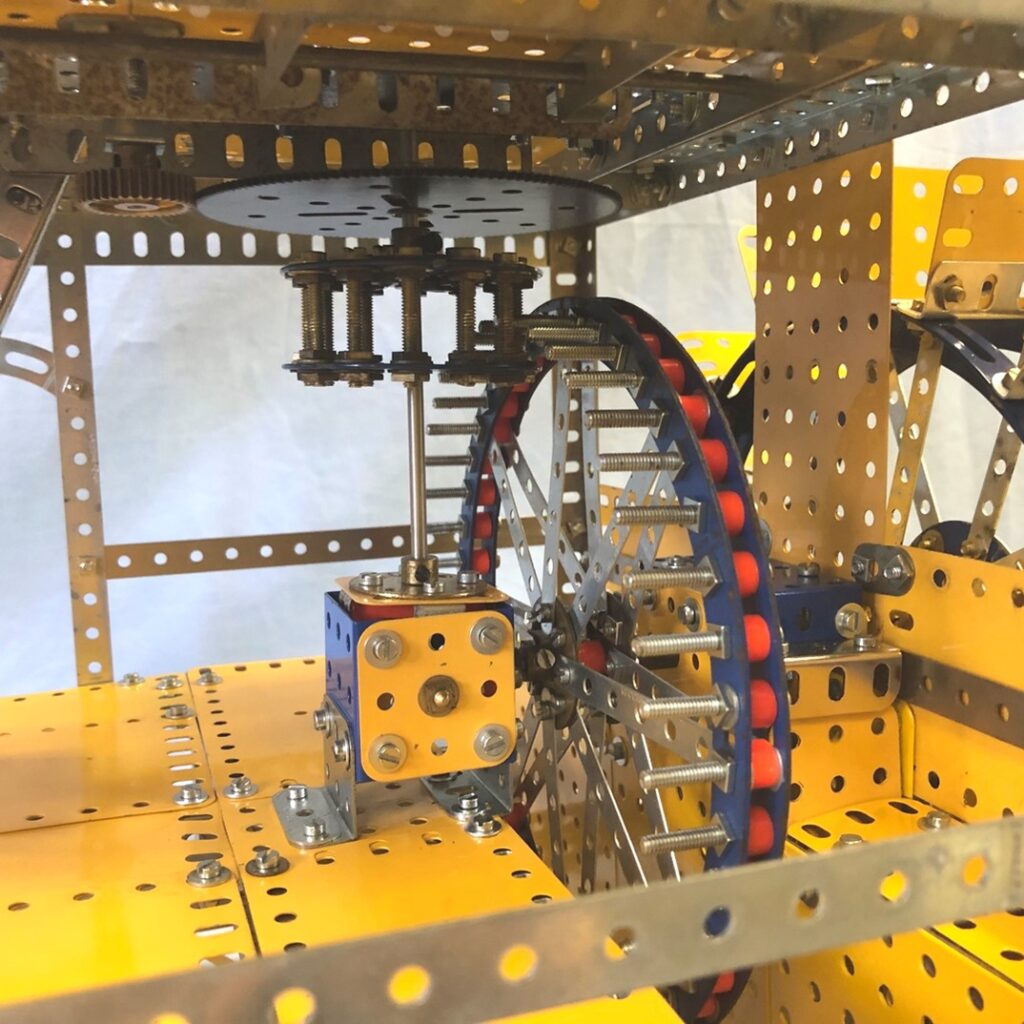
All these moving and wearing parts were once made of wood.
